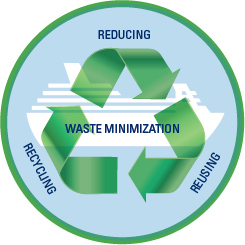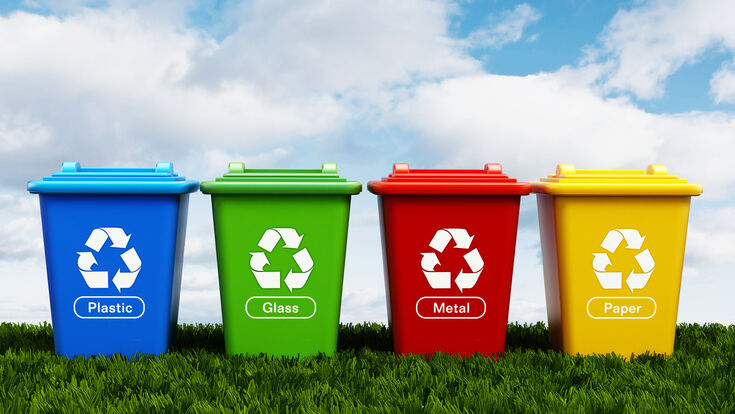Exploring Various Kinds of Waste in Modern Waste Administration Systems
The contemporary landscape of waste monitoring entails browsing a complex selection of waste types, each needing specialized handling and disposal approaches to minimize ecological impacts. Community solid waste, unsafe waste, digital waste, and natural waste each existing distinct obstacles and possibilities for source recuperation.
Metropolitan Solid Waste
Municipal strong waste, frequently referred to as family trash or rubbish, encompasses a variety of discarded products created by household, industrial, and institutional resources within a community. This waste stream commonly consists of things such as packaging, food scraps, backyard trimmings, paper, plastics, textiles, and thrown out home items. The administration of metropolitan solid waste is a crucial part of metropolitan preparation and public wellness, requiring effective collection, transport, and disposal systems.
Effective waste administration systems are designed to lessen ecological influence while taking full advantage of source recuperation. This typically involves a mix of strategies including recycling, composting, and landfilling. Reusing programs target products like paper, glass, metals, and specific plastics, diverting them from landfills and reintroducing them right into the production cycle. Composting organic waste, such as food scraps and yard trimmings, not only minimizes land fill usage however also generates important dirt modifications.
Municipalities must also resolve the economic and logistical obstacles connected with waste administration. Applying pay-as-you-throw systems, boosting public understanding, and spending in technology can significantly improve waste diversion prices. By incorporating these practices, communities can cultivate sustainable neighborhoods, lower greenhouse gas discharges, and preserve natural deposits.
Hazardous Waste

Effective hazardous waste management entails numerous critical steps: identification, disposal, treatment, and segregation. Identification involves the category of waste based on its dangerous homes. Segregation ensures that harmful products are kept independently from non-hazardous waste to avoid cross-contamination. Treatment approaches, such as chemical neutralization, incineration, and stabilization, are employed to lower the toxicity, volume, or wheelchair of the waste. Ultimately, disposal options, including safe and secure garbage dumps and underground storage space, are selected to guarantee lasting control.
Regulative frameworks, such as the Resource Preservation and Recuperation Act (RCRA) in the USA, provide guidelines and requirements for contaminated materials administration. Adherence to these laws, coupled with developments in waste therapy modern technologies, is crucial in alleviating the risks related to hazardous waste.
Digital Waste
Electronic waste, generally described as e-waste, stands for a swiftly expanding challenge in waste monitoring systems globally. This kind of waste includes discarded electronic gadgets and devices such as smart devices, computer systems, televisions, and other digital appliances. The rapid pace of technological innovation, combined with decreasing product lifespans and consumer demand for the current gadgets, has actually significantly increased the quantity of e-waste generated annually.
E-waste is especially problematic because of its complex make-up, usually consisting of harmful substances like cadmium, mercury, and lead, which present significant ecological and wellness risks otherwise effectively managed. Alternatively, e-waste additionally contains important materials such as silver, copper, and gold, which can be recouped and recycled. The twin nature of e-waste-- both hazardous and beneficial-- demands specific handling, recycling, and disposal processes.
Efficient e-waste management involves rigorous regulatory structures, robust collection systems, and advanced reusing modern technologies. Public awareness and involvement are important, as improper disposal practices, such as Source illegal unloading and casual recycling, worsen ecological contamination and carcinogen. Boosting e-waste monitoring methods is crucial for minimizing environmental impact and recouping useful resources in a progressively digital world.

Organic Waste
Organic see this site waste, comprising kitchen area scraps, backyard trimmings, and agricultural residues, stands for a considerable section of the global waste stream. This kind of waste is biodegradable, indicating it can be damaged down by microbes into less complex organic compounds. Despite its capacity for natural disintegration, inappropriate administration of natural waste can cause negative environmental influences, including the exhaust of greenhouse gases such as methane, which add to environment change.
Efficient management of natural waste is vital for reducing these environmental impacts (recycling lives services). Composting is a widely adopted method, changing organic waste into nutrient-rich garden compost that can boost dirt health and wellness and agricultural performance. Additionally, anaerobic digestion is an arising technology that transforms natural waste into biogas, a renewable resource resource, and digestate, which can be used as fertilizer
Municipalities and waste management entities must apply robust natural waste collection and therapy programs to make the most of the advantages of these procedures. Public education projects can also play a crucial function in motivating houses and organizations to different organic waste from various other sorts of waste. By focusing on the administration of natural waste, cultures can decrease land fill use, lower greenhouse gas exhausts, and develop useful byproducts for farming use.

Ingenious Waste Monitoring
In the realm of waste monitoring, ingenious methodologies are transforming just how societies handle their refuse, going for sustainability and efficiency. These developments incorporate a variety of modern technologies and methods that enhance recycling rates, reduce garbage dump reliance, and reduced ecological impact. One famous innovation is the application of clever waste bins geared up with sensors that monitor fill levels and enhance collection paths. This not only decreases fuel intake however likewise decreases greenhouse gas discharges.
An additional notable development is the fostering of waste-to-energy (WtE) innovations. By transforming non-recyclable waste right into useful energy with processes such as incineration and anaerobic food digestion, WtE decreases landfill problem and offers a renewable resource resource. Moreover, innovations in chemical recycling enable the malfunction of intricate plastics right into their original monomers, enabling the creation important source of brand-new, premium plastic items.
In addition, the round economic climate model is acquiring grip, stressing the style of products and systems that prioritize reusability and resource performance. This holistic strategy encourages sectors to minimize waste generation from the outset. Via these cutting-edge techniques, modern-day waste management systems are not only attending to the instant difficulties of garbage disposal yet additionally leading the way for a more sustainable future.
Verdict
A comprehensive understanding of metropolitan strong waste, unsafe waste, electronic waste, and organic waste, paired with the application of innovative waste management options, is important for minimizing environmental effects. Incorporating innovations such as smart waste bins and waste-to-energy systems can boost efficiency and sustainability. Effective waste management methods not only foster source recuperation but likewise advertise public understanding and involvement, eventually adding to the growth of a round economic climate.
The modern landscape of waste monitoring includes browsing a complex selection of waste kinds, each calling for specialized handling and disposal methods to reduce ecological influences. Municipal strong waste, harmful waste, electronic waste, and natural waste each existing distinctive challenges and possibilities for resource recovery.Digital waste, generally referred to as e-waste, stands for a swiftly growing challenge in waste administration systems globally. With these innovative strategies, contemporary waste management systems are not just addressing the prompt challenges of waste disposal yet additionally paving the means for an extra sustainable future.
An extensive understanding of metropolitan strong waste, dangerous waste, digital waste, and organic waste, combined with the execution of innovative waste administration services, is vital for reducing ecological effects. (recycling lives services)